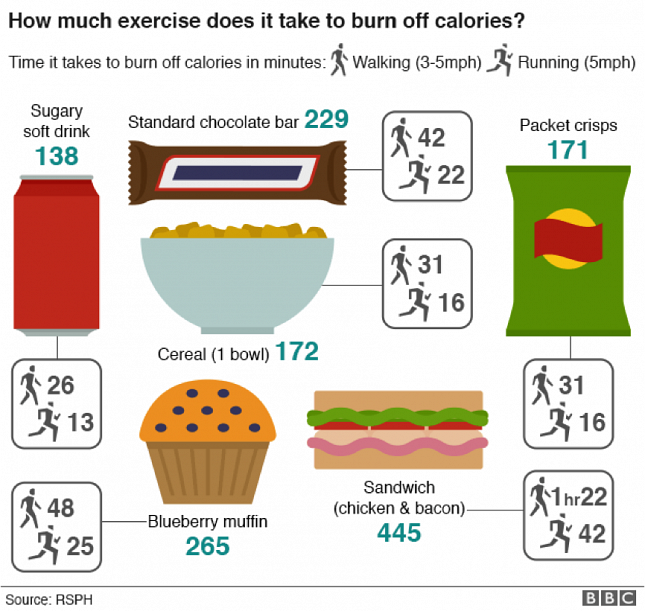There’s no getting away from it - the UK’s obesity problem is reaching a critically high level. With almost two thirds of adults in England being classified as overweight or obese, we can't continue to ignore this growing issue. Action is needed - but can we all agree what that action is?
A recent report by the Royal Society for Public Health (RSPH) has found that labels on food which detail information on how much exercise is required to offset the calories contained in foods would be supported - and can work. In a survey of more than 2000 people, over 60% said they would like the see the inclusion of this type of labelling on food packaging, and that it would make them think twice about consuming the product if the exercise required to offset the calories was high. The survey also found that the move would encourage people to do more exercise, which may perhaps be because they have a quantifiable 'goal' to work towards.
This leads to the question – what is exercise labelling on food? Put simply, it means the inclusion of a small icon on food labels which indicates how long, in minutes, it would take to walk, run, cycle or swim, in order to offset the amount of calories contained within the food item.

(Source: BBC)
It is hoped that the inclusion of this type of information on food packaging will help consumers to make a more informed choice on what they eat – providing this information gives the customer quantifiable details relating to exercise, that may make them think twice about choosing an unhealthy product. Alternatively, the customer may still choose to consume the product but will also be encouraged to participate in more exercise to offset their food habit.
The danger here, of course, is that people may form the opinion that by offsetting the calorie intake of what they have consumed, this then allows them to eat what they like, as long as they continue to do the amount of exercise indicated on the packet, which simply isn’t the case. An expert cardiologist advisor suggests that while increased exercise levels from the packaging would be an overall positive, people still need to be mindful that you cannot ‘out-eat’ a poor diet – different calories have differing metabolic effects on the body (Source: The Guardian).
A nutritionist discusses the pros and cons of exercising labelling on food packaging
The Food and Drink Federation have described the concept as ‘interesting’ and may be looked into in the near future. The current nutritional ‘traffic light system’ on food packaging has already been a welcome improvement, although it may not be having as much impact as hoped. The RSPH suggest that a change such as exercise labelling on food is a much more relatable concept to the consumers’ everyday lifestyle and acts as a gentle nudge towards positive health behaviours such as nutrition awareness and exercise uptake.
What do you think? We would love to hear your thoughts. Submit your comments below.
Interested in trialling this initiative in your area? Contact us.

